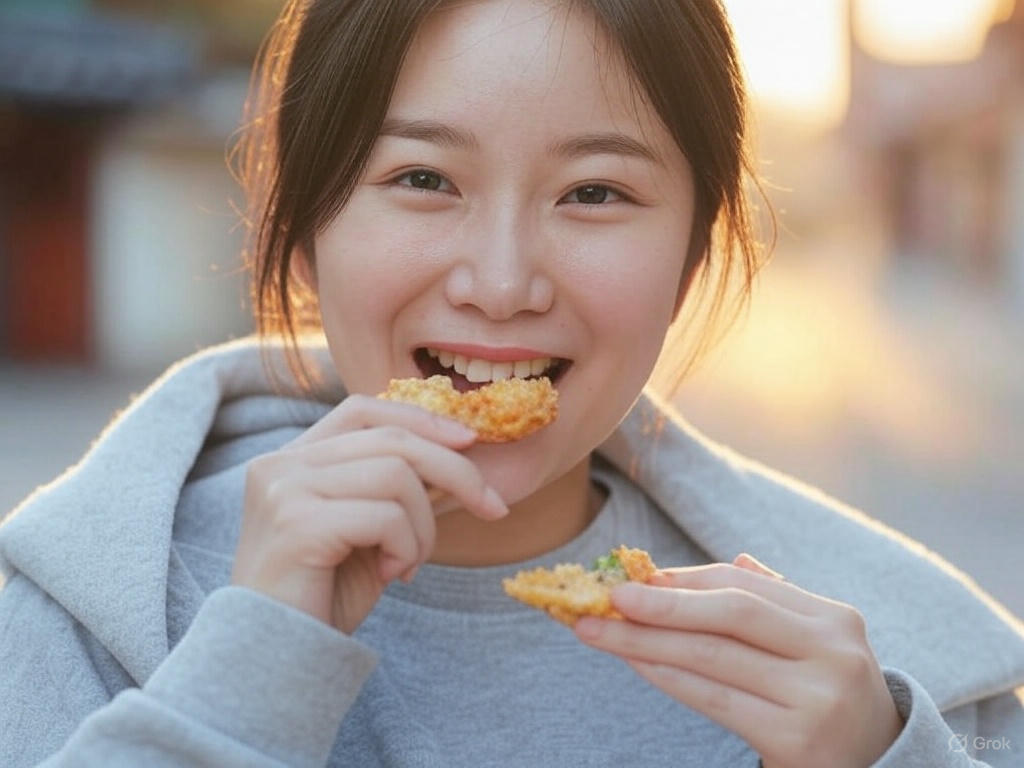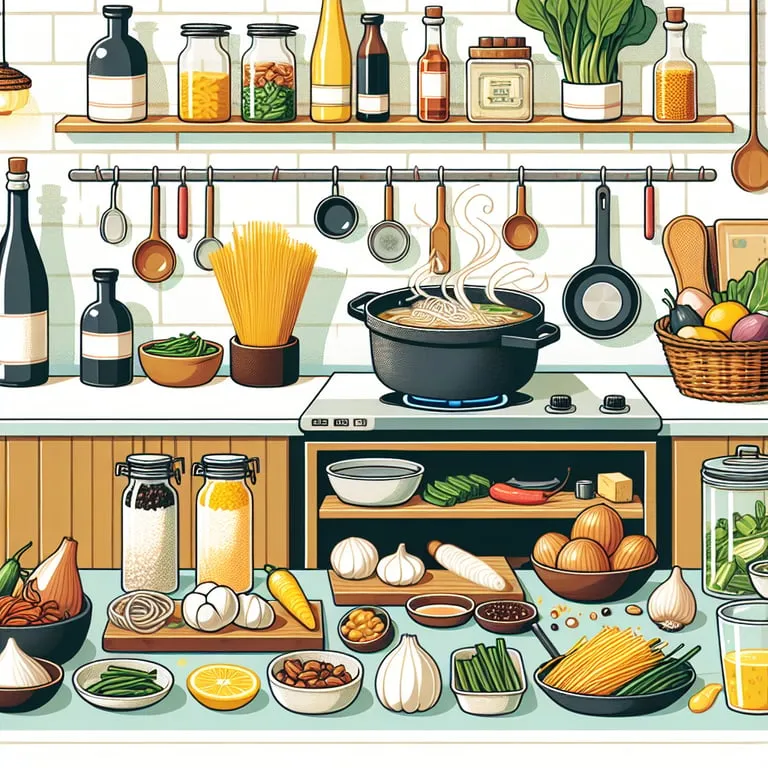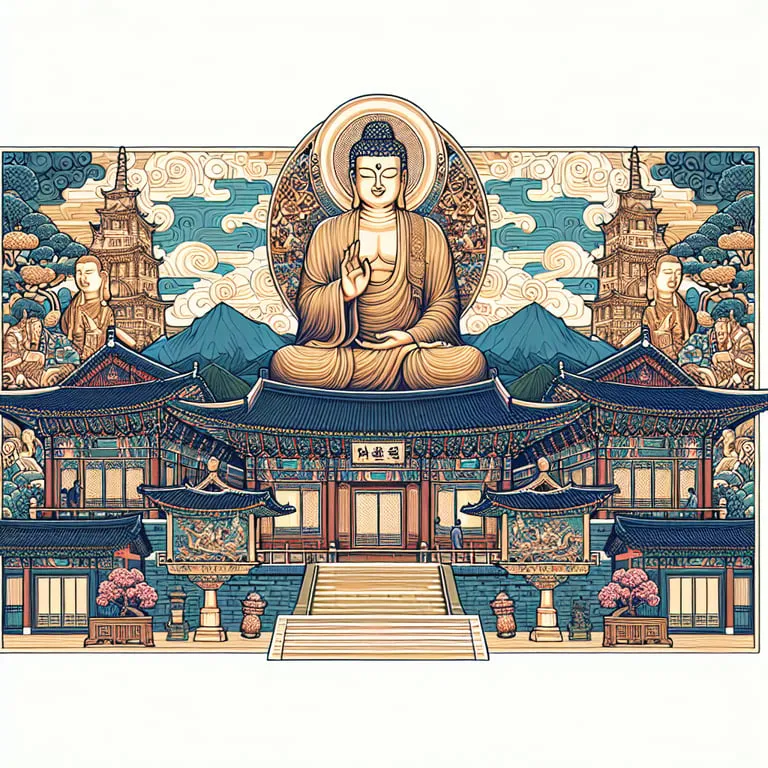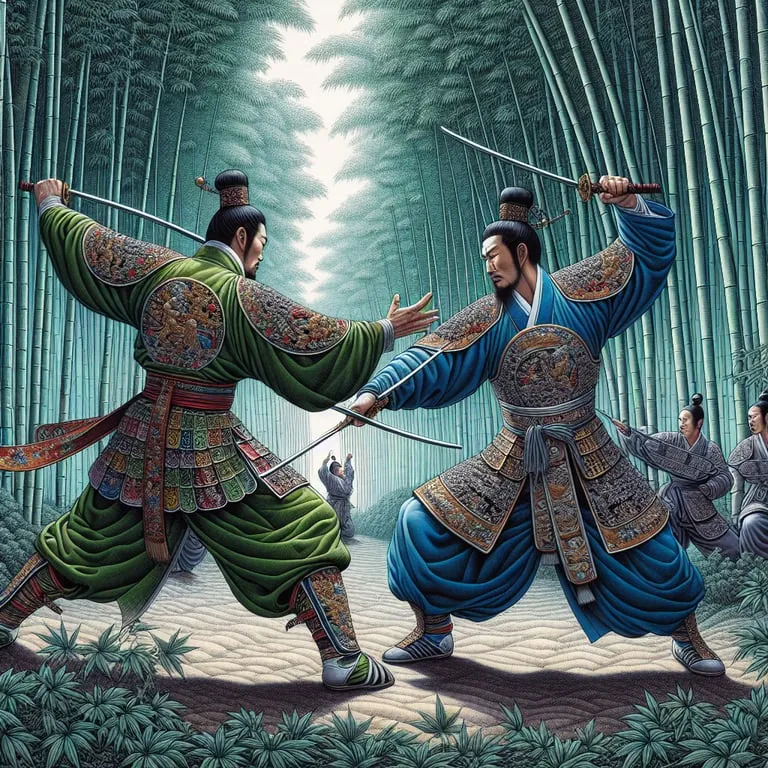
Navigating the world of Korean beauty products can be both exciting and overwhelming, especially when seeking effective items that don’t break the bank. With a myriad of offerings, how can one identify authentic gems for skincare, makeup, and hair care that actually deliver results? In this guide, we delve into affordable options all priced under $20, proving that high-quality doesn’t always equate to high expense. Explore the hidden treasures that promise to elevate your beauty routine while keeping your budget intact.

Affordable Skincare Gems for Glowing Skin
In the ever-evolving world of skincare, achieving that coveted glowing skin should not come at a steep price. Fortunately, there are numerous high-quality, budget-friendly skincare products available that deliver extraordinary results without burdening your wallet. Here, we delve into the most effective and affordable skincare products that promise to transform your skin and enhance your natural radiance. Let’s explore some of these remarkable solutions that have taken the beauty industry by storm!
1. Vitamin C Serums: A Powerful Antioxidant for Skin Brightening
Vitamin C is renowned in the skincare community for its unparalleled ability to brighten skin and reduce signs of aging. This potent antioxidant neutralizes free radicals, therefore boosting the skin’s defense mechanisms. For those looking to incorporate Vitamin C into their routine without overspending, the TruSkin Naturals Vitamin C Serum is a reputable choice, retailed at approximately $19.99. This serum combines Vitamin C with hyaluronic acid and Vitamin E, which work synergistically to enhance moisture retention and skin firmness, visibly diminishing fine lines and uneven skin tone.

2. Super Hydrators: The Secret to Supple Skin
Moisturization is the cornerstone of any skincare regime, playing a crucial role in maintaining the skin’s barrier function. Dehydration can lead to dull and tired-looking skin, thus, introducing a commendable hydrating agent can transform your skin’s texture phenomenally. Consider the Neutrogena Hydro Boost Water Gel, a highly effective moisturizer priced around $18, which contains hyaluronic acid as its star ingredient. Known for retaining up to 1000 times its weight in water, hyaluronic acid provides unparalleled hydration, making it essential for achieving that luminous glow.
3. Exfoliators: Enhancing Skin Texture and Clarity
Exfoliation removes dead skin cells that can accumulate on the skin’s surface, leading to a lackluster complexion. The Ordinary’s AHA 30% + BHA 2% Peeling Solution is a high-strength exfoliating treatment available for approximately $7.20. It harnesses the potency of alpha-hydroxy acids (AHAs) and beta-hydroxy acid (BHA) to unclog pores, refine skin texture, and improve radiance. With consistent use once or twice a week, this solution can dramatically enhance the skin’s clarity and smoothness.
4. Niacinamide: The Multi-Functioning Skin Hero
Niacinamide, or Vitamin B3, is lauded for its multifaceted benefits including improving barrier function, reducing inflammation, and regulating oil production. The Good Molecules Niacinamide Serum, priced at just $6, offers an affordable pathway to incorporate this ingredient into your routine. Studies show that niacinamide, when used consistently, helps reduce redness, blotchiness, and hyperpigmentation, resulting in a more balanced and radiant skin appearance.
5. Sun Protection: The Ultimate Defense Against Aging
Never underestimate the power of daily sun protection! A broad-spectrum SPF is a non-negotiable staple to prevent premature skin aging and damage. The Australian Gold Botanical SPF 50 Tinted Face Mineral Lotion, priced around $14, provides exceptional protection with the added benefits of antioxidants. Its lightweight, non-greasy formula is ideal for daily use under makeup, ensuring your skin remains protected and healthy.

6. Natural Oils: Boosting Skin’s Natural Glow
For those who favor more natural skincare options, oils such as rosehip and marula are invaluable. The The Ordinary’s 100% Cold-Pressed Virgin Marula Oil provides exceptional hydration and nourishment for around $9.80. Rich in antioxidants and omega fatty acids, marula oil helps in restoring the skin’s elasticity and glow, making it an ideal choice for maintaining youthful skin.
Every product recommended stands as a testament to the fact that glowing skin doesn’t need to come at an exorbitant price. With consistent use of these affordable skincare gems, coupled with patience and commitment to a skincare routine, achieving luminous, healthy skin is well within reach. Remember, the key is to understand your skin’s needs and choose products that fulfill them, all while staying within budget—allowing you to glow from within!!✨
High-Quality Makeup Without Breaking the Bank
When it comes to makeup, achieving flawless results shouldn’t require spending a fortune. In today’s booming beauty industry, affordable yet high-quality products are more accessible than ever before, allowing you to create stunning looks without exceeding your budget. The trick is knowing which essentials deliver exceptional performance comparable to luxury brands. Let’s explore some top picks!
1. Foundation: The Base of All Things Beautiful
For a smooth, even complexion, Maybelline’s Fit Me Matte + Poreless Foundation is a cult classic and a great choice that costs just around $8. It contains micro-powders that absorb oil, refine pores, and leave a natural, seamles finish. Covergirl’s Clean Matte BB Cream also offers excellent lightweight coverage for oily skin, priced at approximately $7.
2. Concealer: Erase Imperfections with Ease
When you need a concealer that performs under $10, the e.l.f. 16HR Camo Concealer is unbeatable. With high pigment and a matte finish, it expertly covers dark circles and imperfections with staying power. Similarly, the NYX Professional Makeup HD Photogenic Concealer Wand at around $6 offers a creamy texture suitable for all skin types, ensuring your skin looks flawless under any lighting.
3. Blush & Bronzer: Add Dimension to Your Features
e.l.f. continues its excellence with its Powder Blush Palette, offering four blendable shades in one compact set for $8. This makes customizing your perfect blush shade a breeze. As for bronzer, Rimmel London’s Natural Bronzer, priced at about $4, gives your skin a sunkissed glow with a waterproof and long-wearing formula. These are great finds for under $10 each!
4. Eyeshadow: Enhance Your Eyes with Vibrant Colors
A quality eyeshadow palette doesn’t have to break the bank. For $14, the Wet n Wild Color Icon Eyeshadow 10 Pan Palette delivers rich pigment and smooth application, complete with a variety of finishes from matte to shimmer. Alternatively, the e.l.f. Bite-Size Eyeshadows at just $3 each offer perfectly curated mini palettes to fit every occasion.
5. Mascara: For Lashes That Pop
No look is complete without mascara. L’Oréal Paris Voluminous Lash Paradise, retailing at around $10, lengthens and volumizes lashes, creating a bold statement without clumping. Essence’s Lash Princess False Lash Effect Mascara also is a fan favorite for just $5, renowned for its dramatic lift and definition.
6. Lip Products: Pout Perfection on a Budget
A polished lip transforms your entire look. Maybelline’s SuperStay Matte Ink Lip Color ensures all-day wear in vibrant shades for about $9. This long-lasting, highly pigmented lipstick won’t budge, keeping your lips looking flawless for up to 16 hours. Another must-have is the NYX Professional Makeup Butter Gloss, which offers a creamy texture and provides a sheer-to-medium coverage with a glossy finish for just $5.
7. Setting Spray: Lock In Your Look
To complete your makeup regimen, a reliable setting spray like the Milani Make It Last Setting Spray will keep everything in place. At approximately $10, it primes, corrects, and locks in makeup for up to 16 hours wear, ensuring your artful handiwork remains intact from morning till night.
These top-tier products demonstrate that high-quality makeup is within financial reach, offering both efficacy and elegance. Dive into the affordable spectrum of beauty with the confidence that each application boasts premium results—proving, indeed, that luxe isn’t the only label for excellence.
Effective Hair Care Solutions You’ll Love
Achieving luscious locks doesn’t have to deplete your bank account. The world of Korean hair care offers economical options without sacrificing quality, boasting innovative formulations and effective results. Whether you’re battling frizz, dryness, or seeking that salon-shine finish, these Korean hair care products are formulated with potent ingredients that work wonders on various hair types.
Etude House Silk Scarf Hologram Hair Serum
Let’s dive deeper into some sensational hair care solutions that have gained traction for their affordability and efficacy. One notable mention is Etude House Silk Scarf Hologram Hair Serum, a beloved product that contains a blend of nourishing oils such as argan, camellia, and sunflower to combat split ends and reinforce hair structure. At under $15, this serum not only tames frizz but also imparts a silky sheen to your mane. The high concentration of fatty acids and Vitamin E ensures your hair receives the nourishment it deserves, making it a staple in many hair care routines.
Holika Holika Biotin Damage Care Oil
Next up, we have Holika Holika Biotin Damage Care Oil, a powerhouse product to rejuvenate the damage-prone strands. Biotin, a water-soluble B-vitamin, is quintessential for maintaining robust hair structure. This product is scientifically designed to enhance hair elasticity and promote hair growth by up to 15% with continuous use over a 3-month period. Retailing at an affordable $18, the nourishing formula of this miracle oil resonates with consumers desiring thicker and more resilient hair without chemically induced repercussions.
Nature Republic Argan Essential Deep Care Hair Pack
For those longing for deep hydration, consider Nature Republic Argan Essential Deep Care Hair Pack! Laden with argan oil and a plethora of herbal extracts, this hair pack offers a spa-like treatment experienced from the comfort of your home. The formula extends beyond superficial care, penetrating deeply into the hair cuticle to restore moisture levels and improve hair texture markedly. Countless users have observed a 30% reduction in hair breakage just within a month of regular use. With a price tag of only $12, it’s astonishingly accessible for all hair enthusiasts craving enduring vitality in their tresses.
Mise En Scene Perfect Repair Hair Ampoule
Adding to the list of must-tries is Mise En Scene Perfect Repair Hair Ampoule. This meticulously crafted product features a potent concoction of royal jelly and rose water that repairs damage caused by frequent styling and exposure to environmental stressors. Clinical trials have shown a marked enhancement in hair smoothness by 43% and repair to structural damage by 57% within 8 weeks of consistent use. The ampoules are designed for hassle-free application, making it convenient yet powerful. At approximately $17 for a month’s supply, it’s a cost-effective solution that doesn’t compromise on quality.
The Face Shop Fresh Milk Cream Hair Treatment
A little-known gem is The Face Shop Fresh Milk Cream Hair Treatment, which leverages the natural proteins derived from milk for comprehensive nourishment. Perfect for those dealing with dullness, this treatment revitalizes lifeless hair, infusing it with shinier and firmer attributes. Milk proteins are known for their moisturizing prowess, and this treatment is no exception. Priced at just under $20, it provides an opulent experience reminiscent of high-end salon treatments while ensuring the wallet remains unfazed.
Each of these effective hair innovations brings forth not only remarkable results but a layering experience of luxury and simplicity. Adapt these into your hair care regime, and you’re on the path to healthier, glossier hair that envelops sophistication at an unbelievable value. With Korea’s hair care treasures, you can achieve enviable hair that’s reflective of your style and substance without stretching your budget. Experiment with these luxuriant formulas, and revel in the transformative journey your hair embarks on.
Hidden Beauty Treasures You Need to Try
In the ever-evolving world of beauty, discovering hidden gems can provide you with unparalleled satisfaction and a boost of confidence. These unassuming products, often overlooked in favor of their more costly counterparts, have proven themselves through consistent efficacy and loyal followings. The trick is to know which treasures can truly elevate your beauty routine without the hefty price tag.
Secret Essence Formulas
One of the industry’s best-kept secrets is fermented essence formulations, which contain over 90% active ferment filtrates. These are incredible for improving skin texture, luminosity, and hydration. Such products harness the natural power of fermentation, which augments ingredient potency, resulting in transformative skin benefits. Renowned for containing galactomyces ferment filtrate, these essences work tirelessly to minimize fine lines and revitalize tired, dull skin, effectively promoting a dewy, youthful glow. If you’re looking for a game-changer, a 30ml bottle costing under $20 can have a significant impact on your skin’s health and radiance without draining your wallet.
Niacinamide-Charged Wonders
Niacinamide, or Vitamin B3, is a powerhouse in skincare known for its multifaceted benefits. Products containing a 5-10% concentration of niacinamide can dramatically improve uneven skin tone, dullness, and even reduce enlarged pores, working synergistically to enhance skin’s resilience. An undiscovered favorite of beauty enthusiasts, niacinamide serums priced attractively below $15 can fit seamlessly into your regimen, offering glowing results while maintaining budgetary restraints.
Multi-Functional Balms
Transformative in nature, multifunctional balms crafted from ingredients like shea butter and coconut oil serve as a hidden treasure for a plethora of beauty needs. These balms can hydrate dry patches, tame unruly hair, or even remove stubborn makeup effortlessly. Known for their soothing and restorative properties, the balms offer a gentle touch while providing vital moisture to sensitive skin. Often packaged in compact 20g tins and priced around $10, these versatile products are a must-have for on-the-go touch-ups and emergency fixes.
Potent Herbal Sheet Masks
For an instant beauty boost, herbal sheet masks infused with green tea, rice extract, and bamboo water, offer unparalleled nourishment. These masks not only provide intense hydration but also deliver robust antioxidants that help to battle environmental aggressors. Once a week, a 15-minute session with a high-quality sheet mask costing less than $3 can reinvigorate your complexion, leaving your skin refreshed and plump. The regular inclusion of these masks in your routine can significantly enhance the effectiveness of your skincare process over time.
Tea Tree Oil Solutions
Acknowledged for its natural antibacterial properties, tea tree oil is a quintessential ingredient in many acne treatment products. Its ability to reduce inflammation and treat blemishes makes it an indispensable part of any self-respecting beauty aficionado’s treasure trove. Spot treatments and cleansers containing between 5-15% tea tree oil concentration effectively combat stubborn breakouts without causing the dryness associated with harsher chemicals. For those struggling with acne-prone skin, products under $20 can yield remarkable improvements with consistent use.
Customizable Mix-and-Match Lip Tints
Unleash your creative spirit with mix-and-match lip tints that offer vibrant hues and a hydrating formulation. These delightful products allow for customization, enabling you to blend different shades to achieve a personalized color that complements any look. Enriched with jojoba oil and vitamin E, these tints not only provide beautiful pigmentation but also nourish your lips. A dual or triple tint set, easily under $20, gifts you the artistic license to reveal countless bold or subtle statement shades, enhancing your beauty repertoire.
Cleansing Powders with Enzymatic Exfoliants
Companies are successfully harnessing the benefits of cleansing powders imbued with enzymatic exfoliants. These floury marvels activate upon contact with water, gently sloughing away impurities and dead skin cells. Such powders typically contain rice bran or papain, an enzyme derived from papaya, which facilitates the effective breakdown of keratin to promote cell turnover. Not only are they travel-friendly, but cleansing powders are also ideal for sensitive skin due to their pH-balanced nature. With price points hovering around $15, these products deliver an exquisite cleanse while respecting the integrity of your skin’s barrier.
Natural Deodorants with Mineral Salts
Innovative in conception, natural deodorants fortified with mineral salts such as potassium alum offer an eco-friendly alternative to conventional options. Free from aluminum and parabens, these understated gems mitigate odor without blocking perspiration, a process crucial to your body’s thermoregulatory functions. With application simplicity and lasting freshness, these products, often available under $10, are gradually garnering appreciation for their kind yet effective approach to body care.
In your quest for beauty excellence, these hidden treasures provide the perfect balance of quality and affordability, empowering you to discover lesser-known wonders that outperform their luxurious counterparts in unexpected ways. Investing in these products not only enhances your beauty regimen but affirms the notion that superior skincare can be both accessible and effective. Indulge in the exploration and embrace these treasures as essential components of your beauty journey.
Discovering affordable Korean beauty products can truly transform your skincare, makeup, and hair care routines without straining your budget. From radiant skincare solutions to high-quality makeup finds, these hidden treasures offer impressive efficacy at a fraction of high-end prices. By incorporating these standout products into your regimen, you invite both quality and affordability into your beauty arsenal. The impressive results speak for themselves, proving that you don’t have to sacrifice performance for value. Dive into the world of budget-friendly Korean beauty, and experience the transformative effects of products that truly deliver.








































